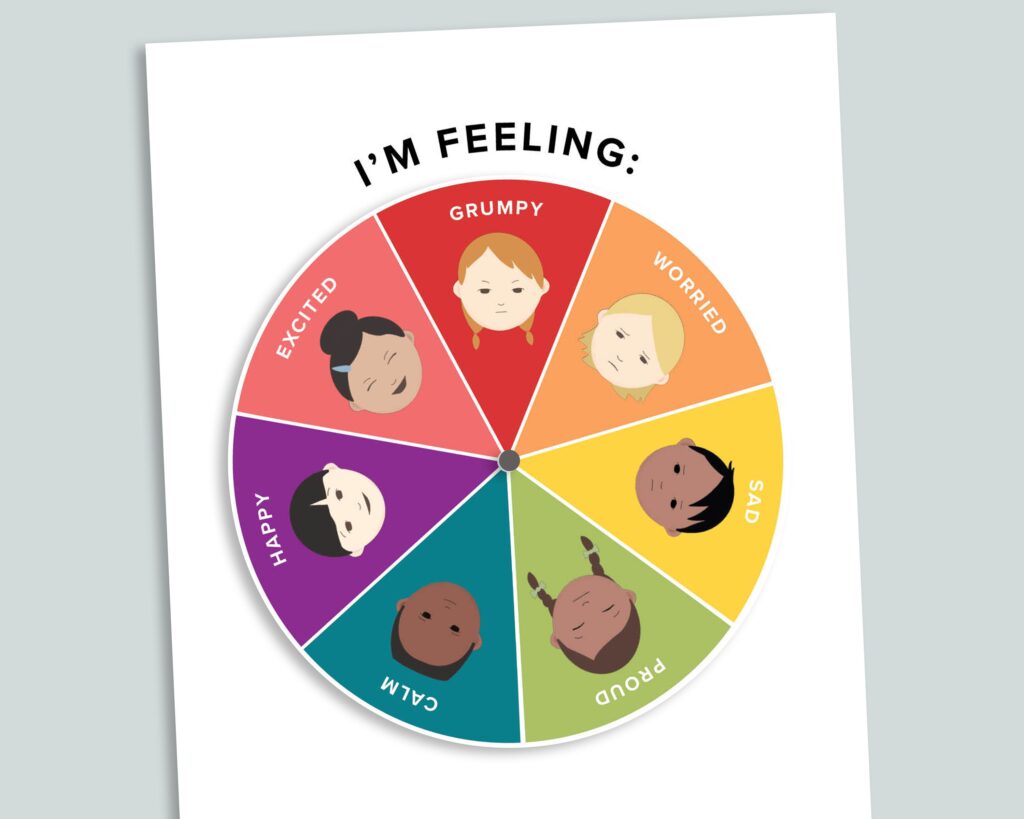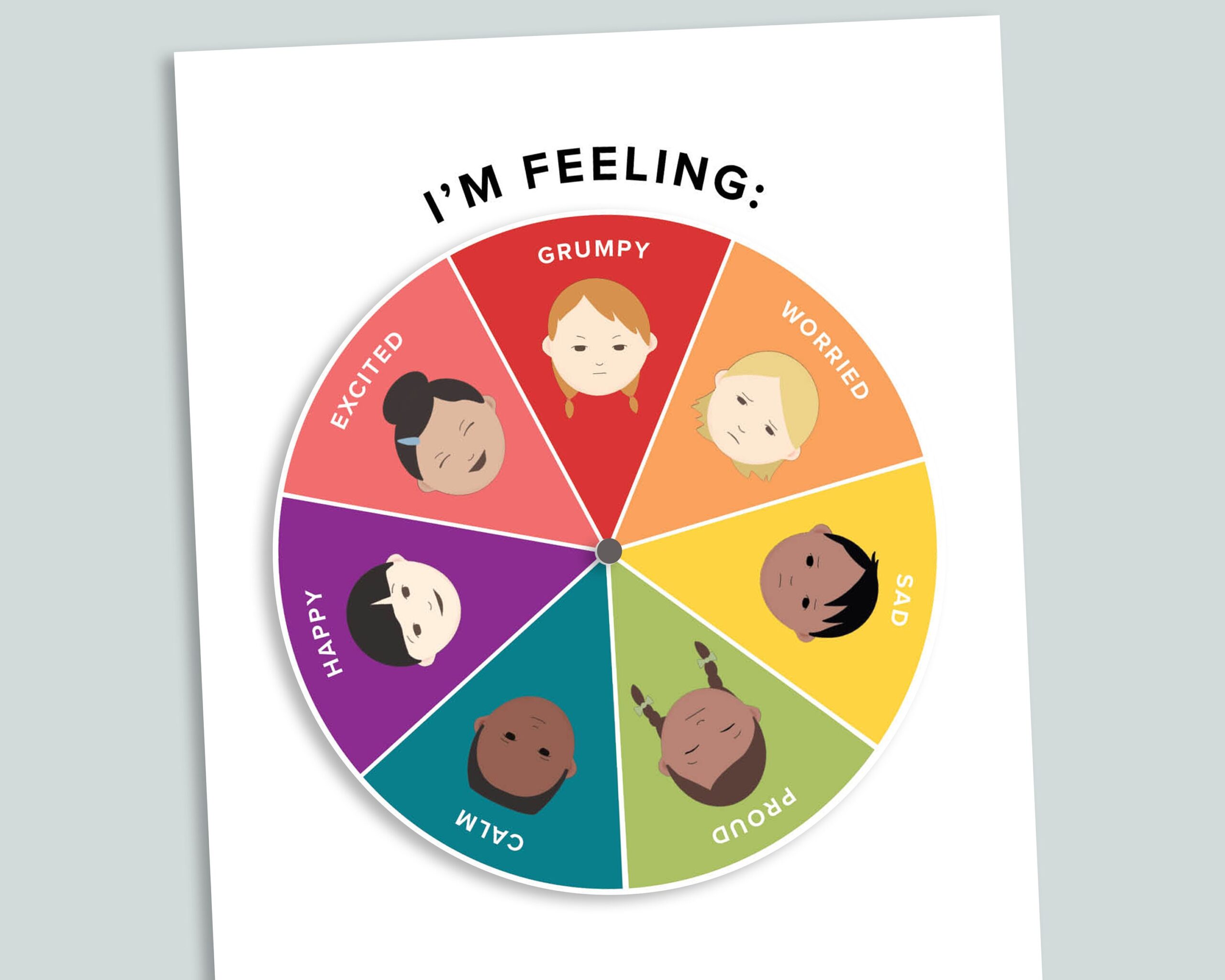
Decoding Emotions: Understanding the Feeling Wheel and Its Applications
The feeling wheel, also known as the emotion wheel, is a visual tool designed to help individuals identify and articulate their emotions more effectively. In a world where emotional intelligence is increasingly valued, understanding and expressing feelings is crucial for personal well-being, healthy relationships, and effective communication. This comprehensive guide will delve into the origins, structure, applications, and benefits of using a feeling wheel, providing practical insights for both personal and professional development.
The Origins and Evolution of the Feeling Wheel
The concept of the feeling wheel isn’t new, but its modern iteration is often attributed to Dr. Gloria Willcox, who created one of the earliest versions in the 1980s. Her work aimed to provide a more nuanced vocabulary for describing emotions beyond simple terms like “happy,” “sad,” or “angry.” Over time, various adaptations and refinements have emerged, each tailored to different contexts and user needs. Today, the feeling wheel is widely used in therapy, counseling, education, and self-help resources.
Structure of the Feeling Wheel
Typically, a feeling wheel is structured in concentric circles, with the most basic emotions at the center. These primary emotions often include happiness, sadness, anger, fear, surprise, and sometimes disgust. As you move outward from the center, the wheel presents more specific and nuanced emotions related to the primary ones. For example, anger might branch out to frustration, irritation, rage, or resentment. This hierarchical structure allows users to start with a general feeling and then drill down to identify the precise emotion they are experiencing.
Primary Emotions
These are the fundamental building blocks of the feeling wheel. They are considered universal and easily recognizable across cultures. Understanding these primary emotions is the first step in expanding your emotional vocabulary.
Secondary Emotions
These are more specific emotions that stem from the primary ones. They offer a deeper understanding of the nuances within each primary emotion. For instance, sadness might lead to feelings of loneliness, grief, or despair.
Tertiary Emotions
Some feeling wheels include a third layer, offering even more granular emotional descriptors. This allows for an incredibly precise identification of feelings, which can be particularly helpful in therapeutic settings or for individuals seeking a deeper understanding of their emotional state.
How to Use a Feeling Wheel
Using a feeling wheel is a straightforward process, but it requires honesty and self-reflection. Here’s a step-by-step guide:
- Identify the Initial Feeling: Start by acknowledging that you are experiencing an emotion. Don’t judge it; simply recognize its presence.
- Locate the Primary Emotion: Refer to the center of the feeling wheel and identify which primary emotion is closest to what you are feeling.
- Explore Secondary and Tertiary Emotions: Move outward on the wheel to explore the more specific emotions related to the primary one. Consider which of these resonates most accurately with your experience.
- Reflect on the Emotion: Once you’ve identified the specific emotion, take time to reflect on why you might be feeling that way. Consider the circumstances, thoughts, and sensations associated with the emotion.
- Express the Emotion: Articulating the emotion is a crucial step. This could involve talking to someone, journaling, or engaging in a creative outlet like painting or writing.
Applications of the Feeling Wheel
The feeling wheel has a wide range of applications across various domains, including:
Therapy and Counseling
Therapists often use the feeling wheel as a tool to help clients identify and express their emotions. It can be particularly helpful for individuals who struggle with emotional regulation or who have difficulty articulating their feelings. By providing a visual aid, the feeling wheel can facilitate deeper exploration and understanding of emotional experiences.
Education
In educational settings, the feeling wheel can be used to teach children and adolescents about emotional literacy. It helps them develop a broader emotional vocabulary and learn how to recognize and manage their feelings. This can contribute to improved social skills, conflict resolution, and overall well-being.
Personal Development
Individuals can use the feeling wheel as a self-help tool to enhance their emotional intelligence. By regularly checking in with their emotions and using the wheel to identify and articulate them, individuals can gain a deeper understanding of themselves and their emotional patterns. This can lead to improved self-awareness, emotional regulation, and overall mental health.
Relationship Building
Understanding and expressing emotions is crucial for building healthy relationships. The feeling wheel can help individuals communicate their feelings more effectively to their partners, friends, and family members. This can lead to improved communication, empathy, and stronger connections.
Conflict Resolution
During conflicts, emotions often run high. The feeling wheel can be used to help individuals identify the underlying emotions driving the conflict. By understanding these emotions, individuals can communicate their needs more effectively and find constructive solutions. [See also: Conflict Resolution Strategies]
Benefits of Using a Feeling Wheel
The benefits of using a feeling wheel are numerous and far-reaching:
- Increased Emotional Awareness: The feeling wheel helps individuals become more aware of their emotions and the nuances between them.
- Expanded Emotional Vocabulary: By providing a wide range of emotional descriptors, the wheel helps individuals expand their emotional vocabulary and articulate their feelings more precisely.
- Improved Emotional Regulation: Understanding emotions is the first step in regulating them. The feeling wheel can help individuals identify triggers and develop coping strategies.
- Enhanced Communication: By providing a common language for emotions, the wheel facilitates more effective communication with others.
- Greater Self-Understanding: Using the feeling wheel can lead to a deeper understanding of oneself, including emotional patterns, triggers, and needs.
- Reduced Stress and Anxiety: Identifying and expressing emotions can help reduce stress and anxiety by allowing individuals to process and release pent-up feelings.
Criticisms and Limitations
While the feeling wheel is a valuable tool, it’s important to acknowledge its limitations. Some critics argue that it oversimplifies the complexity of human emotions and may not capture the full range of emotional experiences. Additionally, cultural differences in emotional expression may not be adequately represented in all feeling wheels. It’s essential to use the wheel as a guide rather than a definitive source, complementing it with other methods of emotional exploration and understanding.
Choosing the Right Feeling Wheel
Numerous versions of the feeling wheel are available, each with its own design and focus. When choosing a feeling wheel, consider your individual needs and preferences. Some wheels are more visually appealing, while others offer a more comprehensive range of emotions. Experiment with different wheels to find one that resonates with you. [See also: Types of Therapeutic Tools]
Integrating the Feeling Wheel into Daily Life
To maximize the benefits of the feeling wheel, integrate it into your daily life. Here are some practical tips:
- Regular Check-ins: Set aside time each day to check in with your emotions and use the wheel to identify and articulate them.
- Journaling: Use the feeling wheel as a prompt for journaling. Write about your emotions, the circumstances surrounding them, and your thoughts and sensations.
- Mindfulness Practices: Combine the use of the feeling wheel with mindfulness practices like meditation to enhance self-awareness and emotional regulation.
- Communication Exercises: Use the wheel as a tool for communicating your feelings to others. Practice expressing your emotions clearly and assertively.
The Future of Emotional Intelligence and the Feeling Wheel
As emotional intelligence becomes increasingly recognized as a critical skill, tools like the feeling wheel will continue to play a vital role in personal and professional development. With ongoing research and innovation, we can expect to see even more sophisticated and effective methods for understanding and managing emotions. The feeling wheel, in its various forms, will likely remain a cornerstone of emotional literacy education and therapeutic practice. [See also: Future Trends in Mental Health]
Conclusion
The feeling wheel is a powerful tool for enhancing emotional awareness, expanding emotional vocabulary, and improving emotional regulation. Whether used in therapy, education, or personal development, it offers a practical and accessible way to navigate the complex landscape of human emotions. By understanding and articulating our feelings, we can build stronger relationships, resolve conflicts more effectively, and lead more fulfilling lives. Embracing the feeling wheel is a step towards greater self-awareness and emotional well-being, empowering us to navigate the challenges and opportunities of life with greater resilience and understanding.

